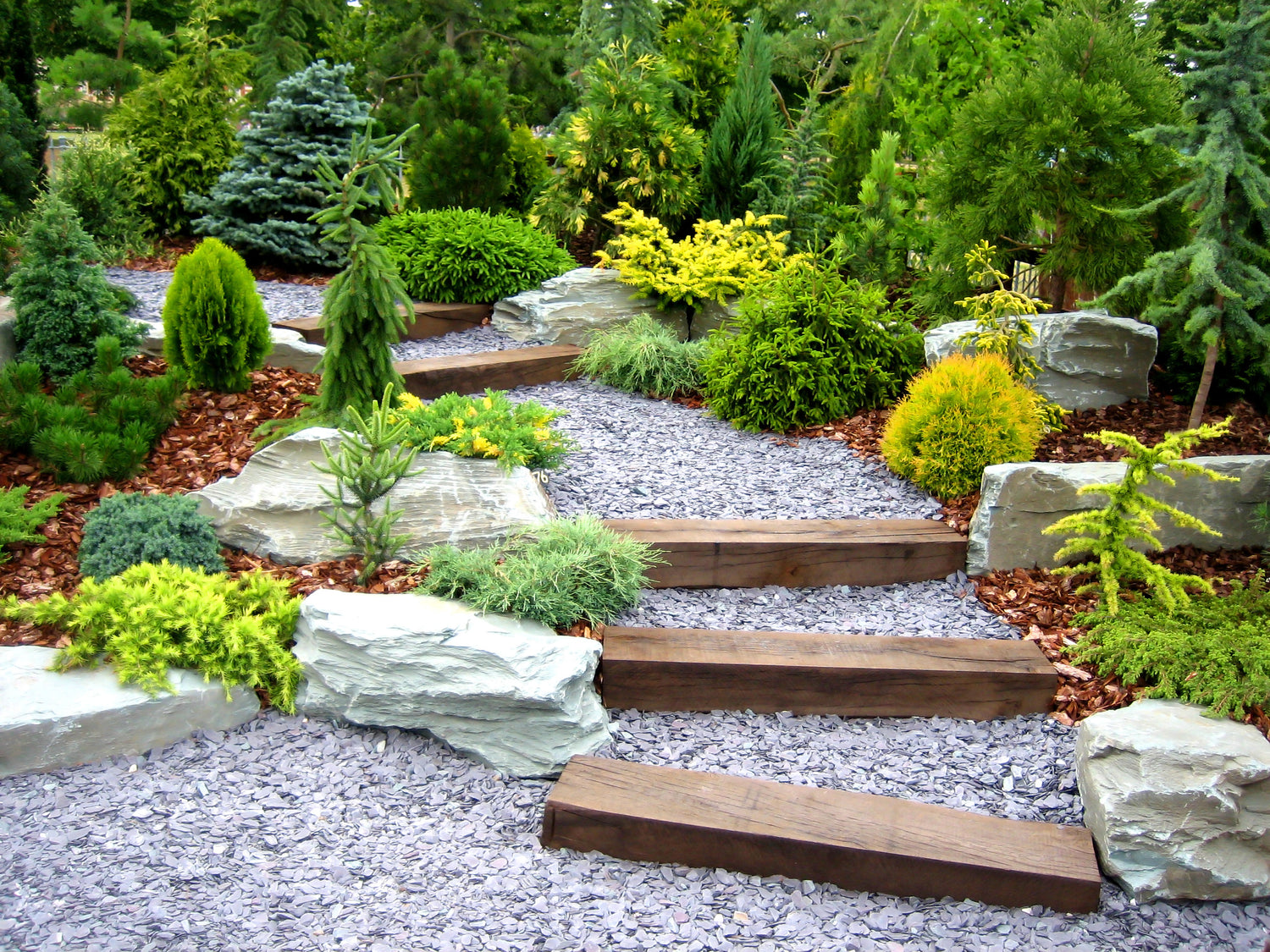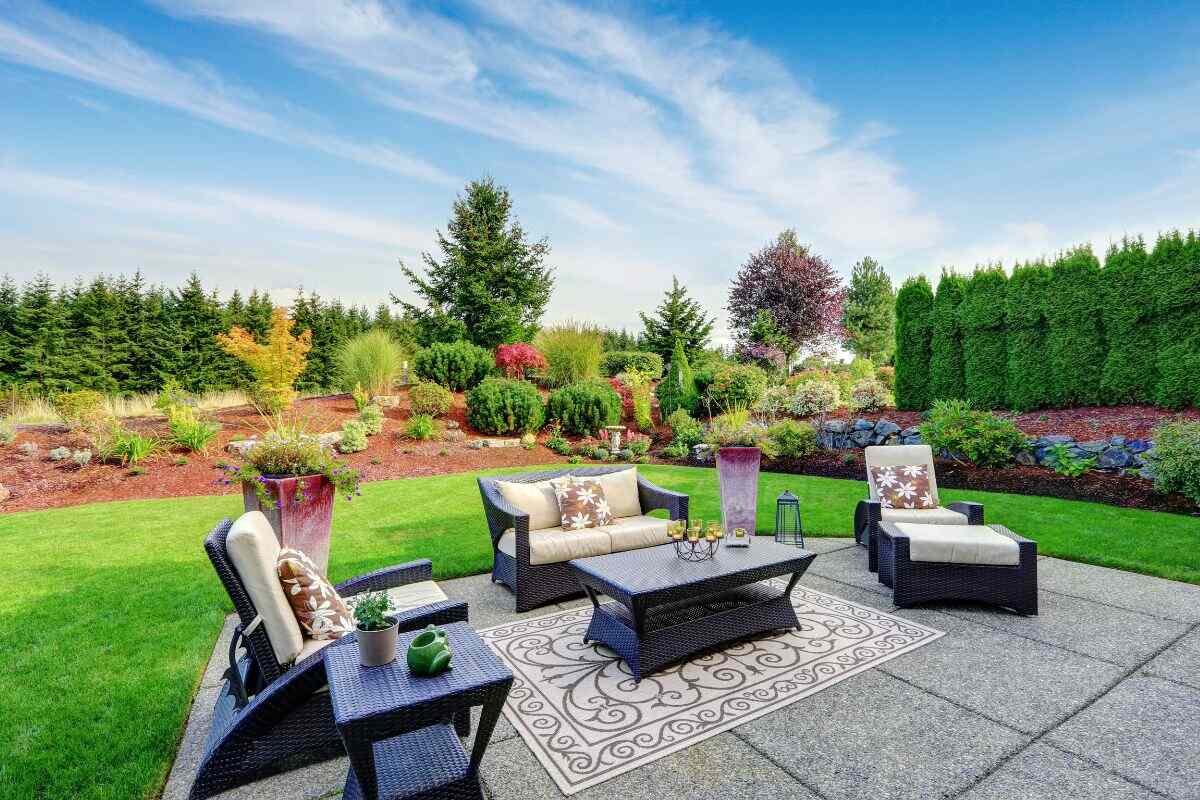Change Your Garden With Cutting-edge Landscape Design Strategies and concepts
Transforming a yard calls for thoughtful consideration of its special features. Reliable landscape Design can enhance both performance and visual appeal. By discovering various methods, one can develop a room that not just shows personal design yet likewise sustains regional biodiversity. As the journey unravels, questions concerning plant sustainability, format, and selection occur, prompting a deeper expedition right into just how to make these ideas revive.
Analyzing Your Outdoor Area: Understanding Your Yard's Potential
Reviewing exterior area is crucial for efficient landscape style. Understanding the unique qualities of a garden allows developers to maximize its potential. Factors such as soil high quality, sunlight exposure, and existing frameworks play an essential function in determining what can be attained. Examining the topography assists identify areas for planting, paths, or water functions, while noting water drainage patterns ensures that plants grow without waterlogging.
Identifying the yard's microclimates can influence plant option and placement. Observing just how the room is made use of by citizens educates functional Design selections, such as seating areas or play areas. Furthermore, thinking about the surrounding atmosphere and bordering landscapes can offer inspiration and context for Design choices. By thoroughly examining these elements, one can produce a natural and welcoming exterior space that mirrors the proprietor's vision while harmonizing with nature. Ultimately, a detailed analysis lays the foundation for a successful landscape Design job.
Choosing the Right Plants: An Overview to Color, Appearance, and Seasonal Passion
When choosing plants for a landscape design, understanding the interplay of shade, appearance, and seasonal passion is essential for creating a vibrant and vibrant yard. Shade can evoke emotions and established the tone for the area; subsequently, choosing a harmonious palette improves aesthetic allure. Cozy tones like reds and oranges produce energy, while cooler shades like blues and eco-friendlies use peace.
Texture includes deepness and dimension, permitting for a mix of vegetation sizes and shapes. Incorporating fine-textured plants with bold-leaved varieties develops contrast and intrigue.
Seasonal rate of interest is essential for keeping year-round beauty. Picking a variety of plants that bloom in various periods warranties that the garden continues to be vibrant, shifting from spring's vibrant flowers to autumn's abundant vegetation. By thoughtfully thinking about these aspects, one can curate a landscape that is not only aesthetically pleasing however additionally diverse and appealing throughout the year.

Creating Practical Zones: Creating Spaces for Relaxation and Enjoyment
Producing useful zones in a landscape Design improves the functionality of outside spaces, allowing property owners to seamlessly blend relaxation and enjoyment. By attentively dividing areas into distinct areas, people can satisfy different activities, from quiet resorts to dynamic celebrations. A well-designed room could incorporate a relaxing analysis space snuggled amongst lush greenery, supplying a relaxing getaway (Landscape Architect). In contrast, a lively outside dining location can function as the excellent setup for celebrations with friends and family
Tactically positioned pathways can assist guests in between these zones, making sure very easy navigating. Furthermore, integrating aspects like seating locations, fire pits, or water attributes can enhance the total setting and performance. The combination of diverse textures and colors in each area can create visual interest while preserving a natural aesthetic. Eventually, developing practical zones permits property owners to maximize their exterior experience, transforming their gardens right into versatile spaces that satisfy diverse lifestyle requirements.
Incorporating Hardscape Aspects: Patios, Walkways, and Focal Points
Integrating hardscape aspects right into landscape Design enhances functional zones by offering framework and visual appeal. Patios offer as essential outdoor living spaces, permitting house owners to appreciate meals and gatherings in a specified area while improving availability. The selection of products, such as all-natural stone or concrete, can greatly affect the general aesthetic, blending perfectly with the surrounding atmosphere.
Pathways facilitate movement via the garden, leading visitors while including deepness and passion. These courses can be crafted from numerous materials, including gravel, pavers, or brick, each adding to the yard's personality.
Prime focus, such as decorative stones, sculptures, or water attributes, attract the eye and create a sense of objective within the landscape. Strategically placed, these elements can change a regular garden into an interesting room, inviting exploration and engagement. Through thoughtful assimilation of hardscape, a landscape ends up being not just functional however likewise aesthetically sensational.
Enhancing Personal Privacy and Security: Natural Obstacles and Frameworks
To improve privacy and safety and security in landscape layout, using natural obstacles such as thick hedges can properly secure a home from unwanted views. Furthermore, installing privacy fences gives a strong framework that adds to a sense of safety and privacy. Together, these elements develop a more intimate outside space while preventing prospective invasions.
Planting Thick Hedges
While many home owners seek visual charm in their landscapes, growing dense bushes serves a twin function of enhancing privacy and protection. These natural barriers develop an aesthetic shield, efficiently obstructing the view from spying eyes and discouraging possible intruders. Numerous species, such as boxwood, holly, or privet, can be chosen for their development patterns and vegetation density, making sure rich coverage throughout the year. Additionally, properly maintained bushes can contribute to a tranquil atmosphere, absorbing sound and providing a habitat for wild animals. The critical positioning of these hedges can define home boundaries and produce remote outdoor rooms, enabling property owners to appreciate their yards with a feeling of security. Inevitably, thick hedges are a reliable remedy for blending beauty with performance.
Installing Personal Privacy Fences
Privacy fencings offer as an additional reliable method for boosting privacy and safety in property landscapes. These structures not only define residential property borders but also produce a sense of seclusion, protecting property owners from spying eyes. Different materials, such as timber, steel, and vinyl, offer distinctive aesthetics and degrees of resilience, permitting house owners to pick based upon their Design preferences and maintenance requirements.

Lasting Landscaping: Eco-Friendly Practices for a Greener Yard
Lasting landscaping highlights the relevance of native plant selection and water preservation techniques. By choosing plants that are well-adapted to the local atmosphere, garden enthusiasts can reduce maintenance and resource use. Implementing effective watering approaches additionally enhances the yard's ecological advantages, promoting a much healthier community.
Native Plant Option
Indigenous plant selection plays an important function in lasting landscape design, promoting biodiversity and decreasing the demand for chemical inputs. By choosing plants belonging to a specific region, garden enthusiasts can create environments that sustain local wildlife, such as pollinators, birds, and helpful pests. These plants are adjusted to the regional environment and dirt conditions, needing much less water and upkeep contrasted to non-native types. In addition, native plants can aid control disintegration and boost soil health and wellness, cultivating a balanced community. Incorporating native varieties into landscape makes not just boosts the visual allure of Click Here the yard but additionally adds to environmental resilience. Inevitably, native plant option is an important approach for those looking for to cultivate a vivid and sustainable yard.
Water Preservation Techniques
Incorporating native plants can substantially improve water preservation initiatives in landscape design. These plants are well-adapted to regional environments, calling for less water and upkeep than non-native varieties. Executing drip irrigation systems allows targeted watering, lessening evaporation and runoff. Rainwater harvesting systems can additionally be installed, collecting and saving rain for garden use. Mulching aids maintain dirt wetness, minimizing the regularity of watering. Grouping plants with similar water requires together produces effective sprinkling areas, additionally saving water. In addition, utilizing permeable products for paths enables rainwater to seep right into the ground, replenishing groundwater products. By employing these water preservation techniques, garden enthusiasts can produce lasting landscapes that thrive while lessening environmental impact (Landscaper). Such techniques add to a greener garden and a healthier ecological community
Personalizing Your Style: Adding One-of-a-kind Features and Personal Touches
How can one change a yard into a personal sanctuary? Individualizing a landscape Design includes integrating unique features that reflect specific preferences and way of lives. One strategy is to integrate individualized garden art, such as sculptures or handcrafted birdhouses, which can offer as focal factors and discussion starters. In addition, customizing plant options based on individual preferences or seasonal flowers can produce a lively and evolving room.
Producing functional areas, such as a comfy analysis nook or an exterior eating space, can improve use and convenience. In addition, integrating elements like a fire pit or a water function can present a welcoming setting.
Color plans, materials, and appearances need to line up with the home owner's style, whether it be modern-day, rustic, or eclectic. Ultimately, the objective is to create an area that reverberates with the person's identity, making the garden not simply a visual pleasure but a true extension of the home owner's character.
Frequently Asked Concerns
How Do I Budget for a Landscape Design Task?
To budget for a landscape Design project, one should analyze project scope, research study expenses for materials and labor, prioritize attributes, and allot an additional 10-20% for unexpected expenses, making certain a sensible economic plan.
What Devices Are Essential for Home Yard Landscaping?
Necessary devices for home garden landscaping consist of a shovel, rake, yard fork, pruning shears, wheelbarrow, trowel, and hoe. These tools aid in soil prep work, growing, upkeep, and efficient transport of materials throughout the landscape design job.
Just How Can I Preserve My Garden After Redesigning?
To preserve a revamped yard, normal watering, mulching, weeding, and trimming are important (Landscaping Contractor). Surveillance plant health, changing dirt nutrients, and seasonal plant treatment add to a growing environment that showcases the yard's brand-new Design check this effectively
When Is the Ideal Time to Start Landscaping?

Can I DIY My Landscape Design or Should I Hire a Professional?
People can definitely DIY their landscape Design if they have creative thinking and fundamental skills; nevertheless, employing an expert useful source usually assures a much more skilled and natural result, specifically for intricate projects or details Design ambitions.
Recognizing the garden's microclimates can influence plant selection and placement. When choosing plants for a landscape layout, recognizing the interplay of shade, texture, and seasonal passion is important for producing a dynamic and vibrant garden. Picking a range of plants that grow in various periods warranties that the garden continues to be dynamic, moving from springtime's vibrant flowers to autumn's rich foliage. Integrating indigenous types right into landscape creates not just boosts the visual charm of the yard yet additionally contributes to environmental strength. Essential devices for home garden landscaping include a shovel, rake, yard fork, trimming shears, trowel, hoe, and wheelbarrow.